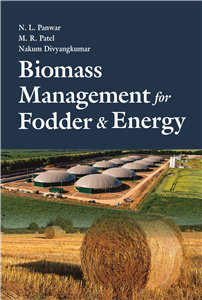Rural planning
January 2011
The current multi-pronged challenges of Indian agriculture demand for searching the viable alternative for restoring farmers and rural youths confidence in the agricultural vocation. Agri-enterprises offer such opportunities to help the agrarian communities to enhance their farm productivity and enhance income from the per unit of land and time.
The present book on Agro-enterprises for Rural Development and Livelihoods Security is an excellent synthesis of scholarly concepts, cases and methodologies pertaining to enterprise promotion in agriculture and the related dimensions. For the benefit of the readers, the book has been divided into three segments. The first part deals with need for micro-enterprise promotion in agriculture, resource appraisal for micro-enterprise development, developing the self, characteristics of potential entrepreneurs and related aspects.
The major aim of this section is to explore, unfreeze and broaden the cognitive and affective domain of the readers so that a desirable mindset among them may be created at the initial stage so that an effective learning may take place in the subsequent chapteIn the second dimension of the book, readers may find the description of varieties of technological options. These include the appropriate technologies and enterprises related to vegetable cultivation, protected cultivation, seed production, food processing, poultry farming, bee-keeping, dairy production and processing, fishery based enterprise, livestock and piggery based technological options having entrepreneurial potential.
The successful experiences of the agri entrepreneurs are also shared in this section. The third and most important part of the book emphasizes on support system required to initiate and sustain the agri-enterprise. These include necessary management related interventions, trade, export, quality standards and other inter-related issues which would definitely enable readers to comprehend how to be successful agri-preneur. Besides, the role of civil society organizations for economic independence in rural India has also been narrated. On-line trading, project monitoring and evaluation and related issue for agricultural commodities are deliberated by the renowned authorities of the above fields.





























